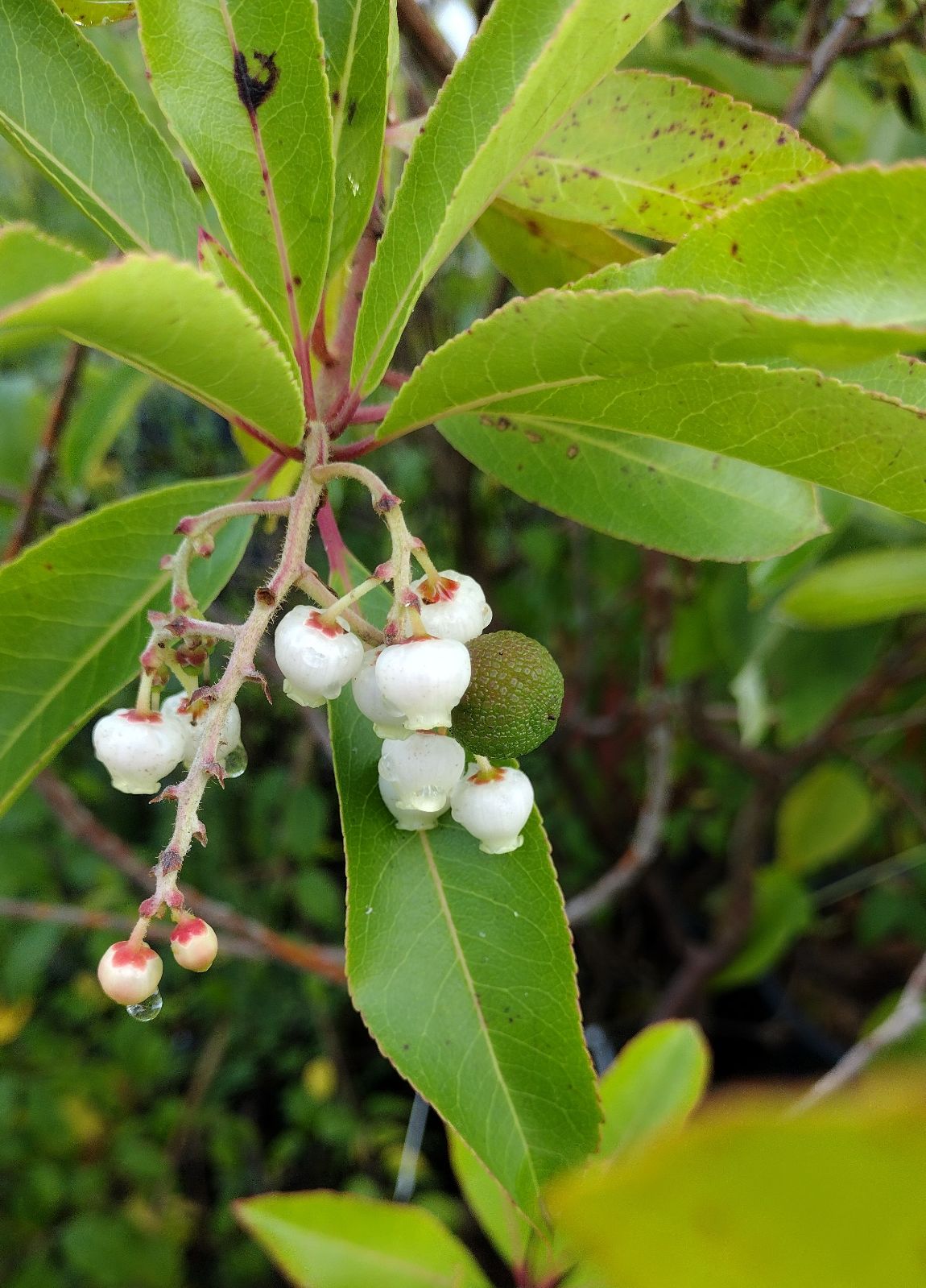Arbutus × androsterilis
Sponsor
Kindly sponsored by
a member of the International Dendrology Society
Credits
Julian Sutton (2021)
Recommended citation
Sutton, J. (2021), 'Arbutus × androsterilis' from the website Trees and Shrubs Online (treesandshrubsonline.
Genus
Intermediate between A. unedo and A. canariensis. Differs from A. unedo in its larger leaves; glandular hairy bracts; and larger fruits to 3 cm across. Differs from A. canariensis in its narrower leaves; less branched, pendent inflorescence lacking glandular hairs; sterile stamens; and flaking rather than peeling bark. (Salas Pascual et al. 1993, Demoly 2004)
Distribution Spain Tenerife
Habitat Open Pinus canariensis forest
USDA Hardiness Zone 8-9
RHS Hardiness Rating H4
Conservation status Not evaluated (NE)
This name covers all hybrids between A. unedo and A. canariensis, which have arisen both in the wild and in gardens. It was described from Tenerife, where naturalized A. unedo meets the native species, by Salas Pascual et al. (1993): the specific epithet refers to its sterile anthers. It has also arisen in at least two gardens on the French and Italian Riviera. Demoly (2004) recognized the hybrid among plants raised from seed collected from A. canariensis growing at both the Hanbury garden, La Mortola, Italy, and the Villa Thuret, Antibes, France. The bark is less striking than that of A. × andrachnoides (Demoly 2004), but the large red fruits, sweeter than those of A. unedo (Salas Pascual et al. 1993, N. Macer pers. comm. 2021) make this a tree worthy of experimental planting. Scarcely tested in our area, but potentially quite hardy, it has been offered commercially in England, from cuttings, by Pan-Global Plants (2021).

